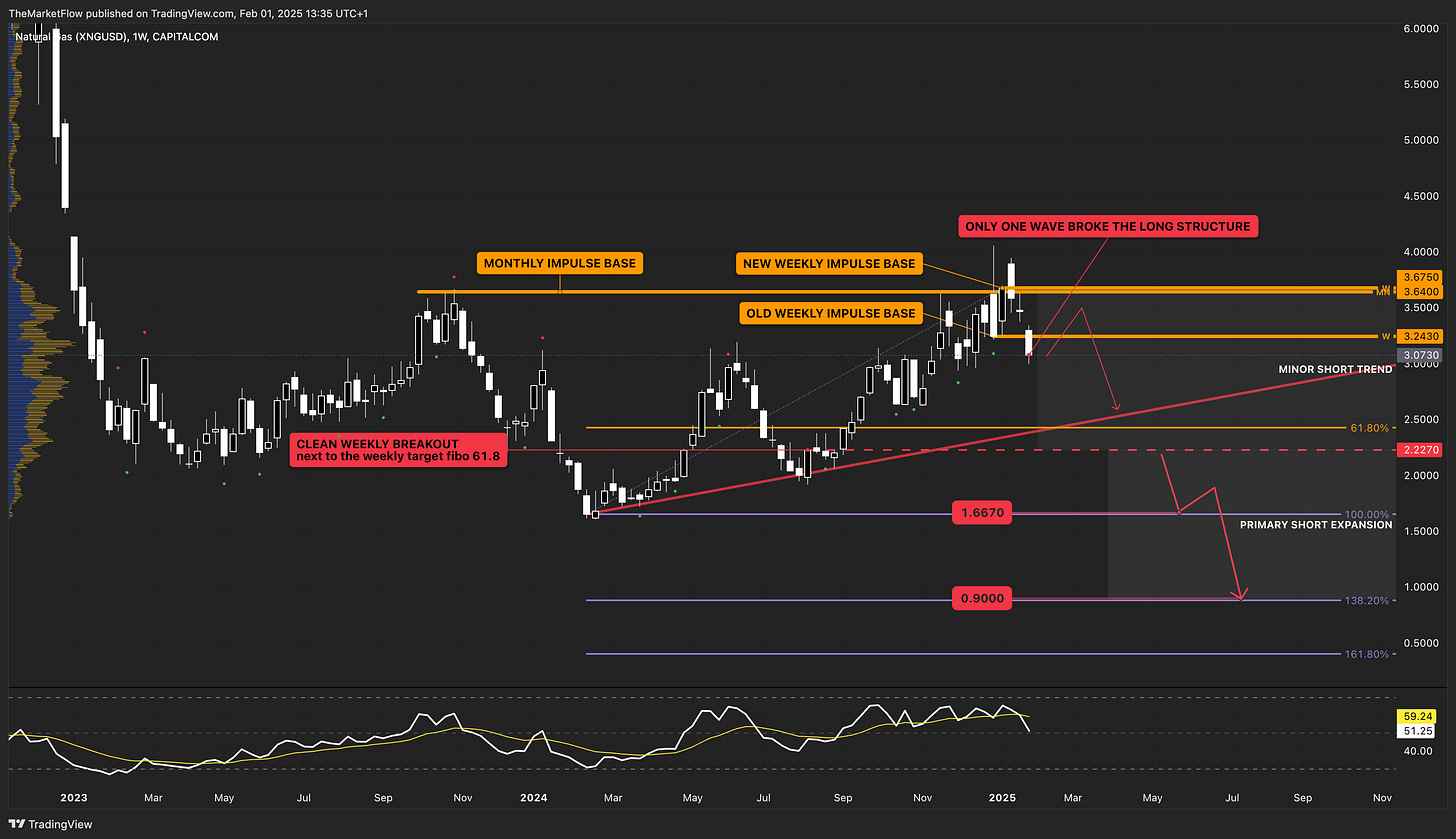📉 NATURAL GAS // long structure broken
The monthly and the weekly trends may come in sync
Key Chart (Weekly)

The market has tested the monthly short trend’s impulse base, then one weekly wave closed below the weekly impulse base of the long countertrend.
If this wave forms a trend (lower lows and lower highs), the sync will be complete, but the expansion phase starts below the clean daily breakout (dashed), where the long countertrend line also breaks, and the price may fall to the target fibo levels.
Key Fundamentals
Summary
The natural gas market is experiencing volatility due to seasonal demand shifts, geopolitical tensions, and global supply adjustments. As of late January 2025, natural gas prices have declined, largely due to reduced demand in Asia during the Lunar New Year holiday and increased European LNG imports (Reuters, Reuters).
Key Factors
Seasonal Demand Variations:
Spot LNG prices in Asia have dropped due to weaker demand during the Lunar New Year holiday, with the average March delivery price falling to $13.80 per mmBtu, down from $14 last week. However, demand is expected to recover in March (Reuters).
European LNG Imports:
Europe has increased LNG imports, drawing shipments away from Asia to secure winter energy supplies. January global LNG imports are projected at 38.12 million metric tons, the highest in a year, with Europe’s share at 11.82 million tons, the most since April 2023 (Reuters).
Geopolitical Tensions:
Russia’s Novatek is lobbying EU policymakers to prevent tighter sanctions on Russian LNG imports, as the EU debates a potential ban on Russian LNG, which accounts for over 20% of its supply. A ban could significantly impact global supply and prices (Financial Times).
Corporate Developments:
Exxon Mobil reported strong Q4 profits, earning $7.61 billion with record production in the Permian Basin and Guyana. Over 50% of its 2024 production came from these areas, with expectations that this will rise above 60% by 2030 (AP News).
Actionable Insights
Bullish Case:
Potential Russian LNG Sanctions could tighten global supply, driving prices higher.
Industrial demand is rising, as Exxon’s planned natural gas-fired power plants for data centers show long-term gas dependency (Business Insider).
Bearish Case:
Extended low demand in Asia, especially if post-holiday consumption remains weak, may continue weighing on prices.
Europe’s aggressive LNG imports could keep the market well supplied, potentially stabilizing or lowering prices.



